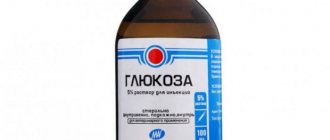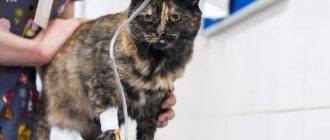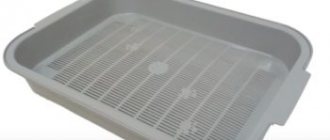Author Tatyana Otradnaya
02/23/2004 08:12 (Updated: 02/14/2020 23:09)
Health » Health and prevention
Doctors call an injection an injection, which is translated from Latin as “injection.” The medicine immediately enters the bloodstream and quickly reaches its target. Therefore, injections are prescribed in acute cases, as well as for any more or less serious conditions. Another advantage of injections is that the medicine does not irritate the stomach and is not affected by digestive juices. Therefore, without any risk, they are prescribed to people suffering from gastritis and ulcers.
How to give an injection yourself
- Usually the medicine is injected into the muscle, and the injections are then called intramuscular. The best place is the upper outer part of the buttock. There is little chance of the needle hitting a blood vessel, nerve or bone.
- Much less often, the drug is injected under the skin (information about this must be on the packaging). Subcutaneous injections are given in the outer part of the shoulder or in the abdomen (insulin).
Features of subcutaneous injection
Unlike intravenous administration of the drug, subcutaneous injections are distributed more evenly and slowly throughout the tissues. This is important for a disease such as diabetes, when insulin must be administered every few hours. Most often, the prescription for drugs administered subcutaneously contains a detailed recipe describing the procedure.
All instructions are educational in nature, therefore, in order to learn how to administer the drug yourself without fear, it is better to consult with a healthcare professional.
For which groups of drugs is this procedure provided?
Most often, the following groups of drugs are administered subcutaneously:
- Local anesthetics in the process of infiltration (layer-by-layer, usually starting with intradermal and subcutaneous) anesthesia during surgical interventions. Lidocaine (xylocaine), Trimecaine, Bupivacaine (marcaine), Naropin.
- Glucocorticosteroids (GCS). Diprospan.
- Coagulants (drugs that suppress bleeding). Adroxon.
- Anticoagulants (RAS) of direct and indirect action. Clexane, Klivarin, Clexan, Enixum, Hemapaxan, Anfibra, Heparin, Fragmin, Daltep, Melagatran.
- Hormones, insulins - Insulin C, Jintropin, Rastan, Dinatrope, Glucagon, Thyrotropin, Humatrope, etc.
- Most vaccines and injection tests.
All these are aqueous or oily solutions and suspensions, the delivery of which, in fact, is an alternative to oral administration (through ingestion) of the same drugs, of course, except in cases of anesthesia.
Note
Solutions of irritating substances (for example, 10% calcium chloride solution), as well as hypertonic solutions, should not be administered subcutaneously or intramuscularly.
These groups of substances can cause local necrosis (death) of tissue. Note that with a sharp decrease in blood pressure (shock, collapsive states), subcutaneous administration is ineffective due to a sharp slowdown in the absorption process.
To be sure to find out which route of administration is suitable for a particular drug, you need to carefully read the instructions, and also check with your doctor or pharmacist when purchasing the medicine.
Indications for injection of drugs under the skin
Most often, drugs are administered subcutaneously that do not have an irritating effect and are well absorbed into the subcutaneous layer. In special cases, the use of intravenous injections is allowed.
Also, this procedure is caused by the need to introduce an oily medicinal solution or suspension, the volume of which does not exceed 10 ml, into the muscle tissue. This is usually how anti-infective vaccinations are done.
Subcutaneous injection into the shoulder or thigh is a common way of administering medications due to:
- rapid absorption of the active substance;
- the ability to perform at home;
- no need to have a medical education.
The main thing is to have the appropriate skills and a little experience.
This method is suitable for:
- administration of insulin to patients with diabetes mellitus. For this, a syringe pen is usually used, but the technique does not change;
- treatment with growth hormones;
- introducing oil formulations and medicinal suspensions, which should not enter the circulatory system;
- administration of drugs intended for local anesthesia;
- administration of the drug when it is necessary to create a supply of the drug in the subcutaneous layer or maintain its concentration in the blood at a certain level for a long time. After all, drugs administered in this way are slowly absorbed into the tissues. As a rule, this takes at least 20-30 minutes.
Solutions of heparin and its derivatives are administered intramuscularly, because injections contribute to the formation of hematomas in the body.
When performing the procedure, you must remember: the volume of the drug administered subcutaneously should be small. Experts recommend using 5 ml at a time or not exceeding 10 ml.
Failure to comply with this condition causes excessive stretching of the tissues and the formation of an accumulation of cellular elements in them, consisting of a mixture of blood and lymph. It is better not to administer drugs that can cause necrosis or abscess at the puncture site subcutaneously.
To carry out the procedure, the following sterile equipment should be prepared:
- syringe;
- napkin;
- the drug is in a sealed state.
If the patient's condition is complex and emergency medical assistance is required, it is better not to perform the injection yourself.
If the injection is given incorrectly
If the technology for administering the medicine has been violated, complications of varying degrees may occur:
- hematoma (when a needle gets into a small blood vessel, blood gets under the skin and a bruise forms. It does not require treatment and disappears on its own after some time. You can use products such as “Badyaga”);
- compaction (infiltrate) – accumulation of liquid medicine in the subcutaneous layer. Most often occurs when administered quickly or when an intramuscular injection enters fatty tissue. As a rule, infiltrates are painless and resolve on their own. If they do not cause discomfort or pain, then no additional measures need to be taken. In this case, you need to choose a different place for injections. To speed up the resorption of the lump after the injection, you can apply an alcohol compress to this place, make an iodine mesh; traditional medicine recommends applying a cabbage leaf, covering it with plastic wrap on top;
- abscess is an inflammatory process that occurs when the injection site becomes infected. It begins with redness, swelling, throbbing pain is possible, and body temperature may rise. If unpleasant alarming symptoms occur, it is better to consult a specialist, since an advanced abscess will have to be opened surgically;
- severe pain, movement disorders, temporary paralysis occurs when a needle enters a nerve (for example, the sciatic). In this case, you should consult a neurologist.
Injection sites
The following sites can be chosen to treat a patient with a subcutaneous injection:
- upper shoulder;
- thigh at the top;
- area under the shoulder blade;
- abdominal wall in front.
Contraindications for the procedure may be individual intolerance to the components of the drug by the patient.
Shoulder
A subcutaneous shoulder injection is administered into the lateral segment of the deltoid muscle. This must be done carefully, because there is a high probability of damage to blood vessels or nerves located close to the surface. Without practical experience in administering such injections, it is better to choose another place to administer the medicine. The safest in this sense is the hip.
Stomach
An injection into the abdominal area is prescribed to patients in preparation for the IVF procedure to administer hormonal medications. Injections should be given according to the instructions included with the medicine. All subcutaneous injections are made with a disposable syringe, which is usually designed for 2 ml of injected liquid.
To inject into the abdominal area, you need to choose the thinnest and longest needle. She must reach the abdominal wall, delivering the treatment solution directly into the subcutaneous tissue of the peritoneum.
When choosing the injection site, you should mentally picture a figure 8, the center of which is at the navel, and make a puncture in the middle of one of the circles of this imaginary picture.
Subsequently, when placing an injection, you need to retreat from the site of the first puncture by 3-4 cm. Before the procedure, the skin is examined for the presence of wounds, warts or birthmarks and try not to inject into such places.
When inserting the needle, both palms of the hands are placed on the side of the navel on one side and the other. This is where experts recommend administering the drugs subcutaneously. Do not inject directly into the navel or center line of the abdomen. There is the thinnest layer of subcutaneous tissue and there is a high probability of injury.
Hip
To give an injection in the thigh, you need to feel 2 large bony protrusions in the upper part of the thigh. They will be located slightly to the side of the leg. The palms are overlapped so that the base lies directly under the protrusions. In this case, this place shows where injections can be performed and you should not go beyond the area of the palms.
If you need to administer mixed insulin, you should choose the thigh or buttocks for the procedure in the evening. This will allow the medicine to be absorbed slowly and therefore reduces the risk of an attack at night.
The main condition for correctly performing the procedure and achieving the desired goal is the choice of a needle of the required length. It is better to discuss this issue with your doctor, because you need to take into account a whole range of factors, which include both physical and pharmacological aspects, as well as the psychological state of the patient.
Subscapularis area of the back
Despite the fact that intramuscular injections can be done at home on your own, it is impossible to place it in the subscapularis area of the back without the help of another person. It is better to agree to visit the medical office and have the procedure done there.
Tool preparation
It is necessary to properly prepare for the injection. To do this you will need to take:
- 2 containers into which sterile and used materials are stored;
- a sterile disposable syringe with a needle of the required size and diameter;
- medicine;
- sterile cotton swabs;
- disinfectant, such as alcohol.
If the patient is performing activities at home, plates may be used instead of trays. But they must first be disinfected. Hospitals use trays that are sterilized by staff.
Ordinary cotton pads are not suitable for wiping skin surfaces. This should be sterile cotton wool purchased from a pharmacy. Before giving the injection, wash your hands thoroughly. You can also use sterile gloves.
Technique for performing a subcutaneous injection by a health worker
The subcutaneous fat layer of the human body is saturated with blood vessels that literally cut through every cm, so for a more effective effect of the medicine, subcutaneous injections are used, for example, into the shoulder, thigh or peritoneum.
The indications for such a procedure are the need for specific medications or infiltration anesthesia. The health worker has experience in giving injections and knows where it is best to do it. In order for the procedure to be beneficial, it is necessary to prepare for it.
Equipment
To work, a nurse or doctor needs to prepare:
- antiseptic;
- sterile wipes or cotton pad;
- 2-5 ml syringe in vacuum packaging;
- administered drug;
- sterile gloves;
- medical alcohol.
In addition you will need:
- scissors;
- a chair or couch to seat the patient;
- cuvettes for disinfection of medical devices, if necessary;
- dressing.
Subcutaneous injections should be made with a needle of the smallest diameter. It should penetrate to a depth of 15 mm. A minimal amount of medication is administered at the same time. It should be quickly absorbed into the fiber, which has a fairly loose structure. This will not allow the aggressive composition to have a negative impact on it.
When the needle is inserted, the skin is slightly pulled back and a small fold is created. In this way, damage to blood vessels, nerve endings and bones can be avoided.
You should not have injections if:
- swelling of subcutaneous fat is observed;
- Recently an injection was given in this place, and a seal remained.
Preparing the patient for manipulation
For the procedure to be effective and painless, it is important to properly prepare the patient for it:
- create a normal psychological microclimate;
- explain the meaning of this manipulation;
- It is convenient to sit or lay down the patient.
Taking medicine into a syringe
The method of withdrawing a drug administered to a patient into a syringe consists of standard actions:
- Checking the compliance of the medicine prescribed by the doctor with the doctor's prescription.
- Checking the expiration date of the drug.
- Clarification of dosage.
- Before opening the ampoule, disinfect its base in the narrowest place.
- Creating a notch on the ampoule with a special nail file. Sometimes the ampoule has specially treated areas with a weakened layer of protection. They are made during production for ease of printing. Then the packaging will have a special mark in the narrowing area.
- After removing the top part of the ampoule, place it in a cuvette for waste materials.
- Opening the ampoule. This is done by wrapping a sterile disk or swab around its neck and breaking it in the opposite direction to the opening one.
- Inserting the needle into the appropriate hole after opening the syringe.
- Removing the case from the needle.
- Lowering the needle into the open ampoule.
- Retracting the piston end back to allow medication to enter it.
- Raising the syringe with the needle up. He's ready for the injection. To make sure there is no air and displace the air inside, lightly tap the cylinder with your finger. Then, pressing the piston, the medicine to the very top, you should wait for a drop to appear at the end of the needle.
Having put the case on the needle, the preparatory stage can be considered complete.
Algorithm of actions when giving an injection
A subcutaneous injection into the upper arm, peritoneum, or thigh will require first decontaminating the injection site prior to administration. To do this, wipe the skin with a swab soaked in alcohol. Movements must go in any direction. The main thing is to avoid gaps and completely clean the desired area. After this, the alcohol should dry completely.
Further manipulations are carried out according to the following scheme:
- Taking the syringe in your right hand, place your index finger on the base of the cannula. Place your little finger on the piston, and place the remaining fingers on the cylinder.
- With the thumb and index finger of your left hand, grab the skin from which a small fold is created.
- Place the needle at the injection site at an angle of 40-45°. You need to hold it with the cut side up. The puncture should end when the needle has entered 2/3 of its length into the fold.
- Supporting the cannula with the index finger of your right hand, move your left hand to the piston and begin to slowly press, pushing out the medicine.
- Use a sterile swab soaked in alcohol to press on the insertion site to close the puncture when the needle is removed. For safety, when removing the sharp end of the needle, hold the place where it is attached to the syringe with your finger.
- After the procedure is completed, the patient should hold the cotton wool at the injection site for some time. Then separate the needle from the used syringe and throw everything into a waste container. It is important to break the needle.
After these procedures, the healthcare worker can remove the gloves and re-disinfect their hands with soap or a special antiseptic.
Subcutaneous injection. Execution technique
If all steps are performed exactly as required, the risk of negative consequences (infection or formation of compactions) will be minimal.
The nuances of administering oil medicine
Oily products should not be administered intravenously. The active ingredients in their composition will clog the blood vessels, leaving tissues without nutrition and starting the process of necrosis, and small particles can reach the lungs and block the air flow. In this case, the person will feel severe suffocation, and then, if no help is given, death will occur.
In addition, oily preparations take a long time to dissolve and are poorly absorbed, so infiltrates can be observed at the injection site. To prevent such consequences, doctors recommend applying a heating pad to the injection site. Before administration, the oil solution is warmed up to 38° C.
Before administering the drug, you need to pierce the patient's skin and pull the piston towards you. If there is no blood inside, it means the needle did not enter the vessel. Then the procedure can be continued. Otherwise, you will have to remove the needle and try again in another place. In this case, the needle itself becomes unsterile and will need to be replaced.
Possible complications
In some cases, the following complications may occur:
- Infiltrates at the injection site. As a rule, they occur when a medicinal composition is introduced into the area of compaction or local swelling resulting from previous injections. The reason may also be the introduction of an insufficiently heated solution or the simultaneous administration of the drug in a volume of more than 5 milliliters. The problem, most often, can be dealt with by applying alcohol or semi-alcohol anti-inflammatory compresses to the sore spot, applying an iodine mesh, and careful gentle rubbing with heparin ointment.
- Abscesses and phlegmons. They can occur when the injection technique is not followed, against the background of improperly treated post-injection infiltrate, or when sterility conditions are violated. In such cases, treatment is carried out only by a doctor. Any self-therapy, in order to avoid worsening the problem, should be excluded!
- Subcutaneous hemorrhages. They occur when blood vessels are damaged by a needle on the way to the point of drug administration (not to be confused with cases of a substance entering a vessel!). They manifest themselves as the release of droplets of blood at the site of the needle impact. It is recommended to lightly press a cotton swab with an antiseptic - alcohol or iodine - to the injection site for 3-5 minutes.
- Chemical damage to nerve tissue. It may occur as a result of the introduction of substances that are aggressive towards nervous tissues near the underlying nerves, when conditions called “medicine depot” are created. As a result, paresis (decreased ability to move the adjacent muscles) and paralysis are likely to occur. Elimination of this complication should be carried out only by a doctor and, as a rule, in a hospital setting. Self-medication is completely excluded, because, in addition to taking tablets orally, it is necessary to carry out targeted local anesthesia (blockade) and physical procedures that require good professional skills.
In general, complications are similar in nature to those that occur with the intramuscular method of delivering drugs to tissues. You can find out more about them in one of the previous articles.
We recommend reading:
- Installation of an intravenous catheter and rules for caring for it
- How to give yourself an intramuscular injection?
- How to make an intradermal injection yourself?
- How to give an intravenous injection?
- How to choose a needle and syringe for giving an injection
- How to prepare solution for injection
- How to place an IV?
How to give an injection yourself? Step-by-step instruction
To know how to make a subcutaneous injection yourself, you need to first study the theory of this process and only then proceed to practice. The first time it is better to do this in the presence of a medical professional who will monitor everything that is happening and, if necessary, will be able to tell you how to correctly perform this or that action.
Storing a Prefilled Syringe
The way in which syringes are stored but not used immediately may vary. It will depend on the medications they contain. Most modern drugs are perfectly stored at room temperature, but there are those that do not lose their medicinal properties only at a certain temperature, so they are placed in the refrigerator.
You can find out information on the safety of a specific substance from a healthcare professional or from the attached instructions. Under no circumstances should you store filled syringes in the freezer or in the open sun.
If the medicine was frozen by accident or according to instructions, it can be used, but this must be done after it has completely melted in the refrigerator itself. But you can’t freeze it a second time: no medicine will retain its beneficial properties after a second defrosting.
Preparing for the injection
A subcutaneous injection into the shoulder or other location will require preparation before it is performed.
To do this you will need:
- a syringe pre-filled with medicine, closed with a protective cap;
- sterile alcohol wipe;
- container for disposal of used medical devices;
- cotton swab;
- patch or bandage.
The next steps will be:
- If the syringes are prepared and stored in the refrigerator, then it is necessary that the one with which the injection is given warms up to room temperature. This will take at least 30 minutes.
- Place everything you need on an equal surface within easy reach. In this case, the syringe should not be shaken so that the medicine does not spoil. If foam has formed inside after an awkward sudden movement, the drug cannot be used.
- Check that the name of the medicine matches what is indicated on the package and in the prescription written by the doctor.
- Make sure that the expiration date has not expired and the dose does not coincide with the doctor’s prescription.
- Pay attention to the color of the liquid. If it changes, becomes cloudy, or the drug begins to crystallize, it should be thrown away.
Action algorithm
The sequence for marking the injection site is as follows:
- Before the injection, thoroughly wash or wipe your hands with an antiseptic.
- Having chosen the injection site, mark the injection point. However, it should not coincide with the mark of the previous injection. If the skin in this place is damaged or has traces of scars, it is better to choose a new injection site.
- If clothing gets in the way, take it off or roll it up.
- Prepare an alcohol wipe for disinfection.
Description of the medicine
The main effect of Heparin injections is to prevent pathological blood clotting by directly affecting the enzyme antithrombin III. Once the product enters the body, platelet synthesis is significantly reduced, which allows maintaining normal blood condition. The anticoagulant is widely used in medical practice both as a prophylactic drug and for the full treatment of many diseases.
Indications for use:
- vascular complications after surgery;
- reduction of blood viscosity in devices intended for artificial blood supply;
- getting rid of blood clots formed during heart surgery;
- treatment of diseases that provoke a decrease in blood microcirculation throughout the body;
- as a prophylactic agent among patients prone to blood clots;
- therapy for myocardial infarction;
- treatment of deep vein thrombosis;
- increased D-dimer levels during pregnancy;
- atrial fibrillation and some other pathologies.
Heparin is used as a stand-alone drug or in combination with medications of other groups, for example, Fibrinolysin, Streptodecase and others.
How to inject yourself?
The procedure for self-administering a subcutaneous injection is as follows:
| Stage | Description |
| Removing the tip | Holding the prepared syringe by the central part, carefully remove the fixing tip. After this, you cannot put the syringe on the table and you need to make sure that the needle does not touch surrounding objects, the body or fingers. If this happens, the needle will have to be thrown away, even if you are sure that the surface was sterile. |
| Checking the syringe for air | To remove air, just lightly tap the flask with your finger and slowly move the piston so that droplets appear at the end of the needle. In some cases, the presence of a bubble is a mandatory condition and without it one cannot be sure of the effectiveness of the medicine. Then you will have to use another syringe. In most cases there should be no air inside the syringe. |
| Preparing the skin for injection | With your free hand, take an alcohol wipe and wipe the skin in the selected area. This should be done carefully, moving from the center to the edges and not missing sections. Then the skin should dry. Hold the syringe with the hand with which the injection will be given. The grip is the same as when writing with a pen or pencil. With the other hand, the skin is grabbed into a fold. |
| Inserting a needle under the skin | With a sharp, confident movement, insert the needle into the skin at a right angle. It should enter the skin completely, without placing your thumb on the plunger. After inserting the needle, the fold opens. After this, by pressing your thumb, the piston slowly moves down until it stops. All the medicine should go under the skin. |
| Removing and removing the syringe | When the syringe becomes empty, smoothly pull the needle out of the body vertically to its surface. If necessary, apply a plaster or bandage. Carefully remove the needle and, covering it with the nozzle, throw it into a waste container, just like the syringe itself. Reusing a used syringe is strictly prohibited. This is fraught with infection or other negative consequences. |
Subcutaneous injection allows you to deliver medicinal substances to the desired organs in adjusted doses. Such injections can be given in the shoulder, thigh, under the shoulder blade or peritoneum. The procedure can be done in a clinic or at home. It’s easy to learn how to administer medications yourself; the main thing is to study the theory and only then do it practically, observing all the nuances of this process.
What mistakes should not be made?
To prevent complications from developing in a person, injections should be given correctly, without making mistakes. Prohibited:
- reuse waste material, including syringes;
- skip any step from the algorithm;
- give injections in the same place;
- During the procedure, you cannot insert a syringe with a long needle deep into the tissue;
- administer injections to persons who do not have the appropriate experience and skills.
Any complication is a reason to contact specialists to prevent the risk of necrosis of tissues and organs. Timely provision of first aid will help avoid bacterial infection, internal bleeding, damage to nerve tissue and other consequences.
Indications and contraindications
Each of the drugs injected into the stomach has a number of indications
Before starting medical procedures, it is important to study existing recommendations in order to properly carry out treatment
Anticoagulants
The most common anticoagulants: Heparin, Fraxiparine, Clexane, Nadroparin, Flenox. They prevent the formation of platelets and their adhesion, and promote the dissolution of blood clots. Anticoagulants improve blood flow and prevent the development of blood clots. Indications for use:
- previous myocardial infarction with the development of acute coronary syndrome;
- thromboembolism, thrombosis, thrombophlebitis and other similar diseases;
- atrial fibrillation causing embolism;
- angina pectoris;
- jades;
- rheumatism.
The administration of anticoagulants is also necessary for severe varicose veins of the lower extremities. The drugs are used as part of complex therapy in the treatment of pneumonia, asthma, and heart defects. Anticoagulants are extremely necessary after operations, when performing blood transfusions from a donor to a patient. They are also used to treat pregnant women when high levels are detected after testing for D-dimer.
Carrying out the IVF procedure and other indications
The artificial insemination procedure often involves injections into the abdominal area. At the first stage, medications are prescribed to stimulate the growth of follicles, from which eggs then appear. They contain hCG - human chorionic gonadotropin. The most popular drugs from this group are Ovitrel, Horagon, Menopur. At the next stages of the IVF procedure, medications are mainly used in a different form - suppositories, tablets, intramuscular injections.
Injections in the navel area are also given in other cases:
- Artificial tanning. The drug Melanotan is used, which stimulates the production of melatonin by skin cells.
- Burning subcutaneous fat in the abdominal area. Popular products from this group are Aqualix, Dermastabilon. To speed up the breakdown of fat, ozone injections can be given to the abdominal area.
- Treatment of psoriasis, Crohn's disease, rheumatoid arthritis. Methodoject is used, which belongs to the group of antimetabolites.
- Treatment of diabetes mellitus involves insulin injections.
Safety precautions
After completing the manipulations, make sure that the patient does not have post-injection complications in the form of an allergic, anaphylactic reaction, infiltration, or air embolism.
- To prevent the development of anaphylactic or any allergic reaction, it is necessary to perform tests when administering serums:
- the syringe is filled with 0.1 ml of immune serum dissolved 100 times;
- required to be inserted into the surface of the shoulder at the bend;
- evaluate the reaction after 20 minutes;
- if no pathological phenomena are noted, then 0.1 ml of undiluted serum should be administered;
- After about an hour, in the absence of pathological manifestations, the rest of the serum is injected.
- If an infiltrate appears after the procedure, then you need to make a hot compress using a heating pad or a 40% alcohol solution;
- Oil solutions must be heated to 38°C in advance before the intended administration, since they are poorly absorbed.
A set of the drug from a bottle into a syringe
#1
#2
. Fill the syringe with as much air as you need to administer the medication. This action makes it easier to draw the medicine from the bottle.
#3
. If the solution is produced in an ampoule, then it must be opened and placed on the table surface.
#4
. You can open the ampoule using a paper towel, this way you can avoid cuts. When collecting the solution, do not poke the needle into the bottom of the ampoule, otherwise the needle will become dull. When there is little solution left, tilt the ampoule and collect the solution from the wall of the ampoule.
#5
. When using a reusable bottle, you need to pierce the rubber cap with a needle at a right angle. Then turn the bottle over and introduce into it the air that was drawn in before.
#6
. Fill the syringe with the required volume of solution, remove the needle and put the cap on it.
#7
. Change needles using the one you will use to inject. This recommendation must be followed if the solution is drawn from a reusable bottle, since the needle becomes blunt when piercing the rubber cap, although this is not visually noticeable. Remove any air bubbles in the syringe by squeezing them out and prepare to inject the solution into the tissue.
#8
. Place the syringe with the needle cap on a non-contaminated surface. If the solution is oily, it can be warmed to body temperature. To do this, you can hold the ampoule or bottle under your arm for about 5 minutes. Do not stand under running hot water or in any other way, because in this case it is easy to overheat. A warm oil solution is much easier to inject into the muscle.
Intradermal injections, how to do
With an intradermal injection, a thin needle is used to inject into the thickness of the skin at an acute angle to a shallow depth. If the needle is positioned correctly, after introducing the solution, a small rounded elevation will form, similar to a lemon peel.
A small air bubble can cause suppuration with intradermal or subcutaneous injection and blockage of a vessel (embolism) with intravenous injection.
Having drawn the solution, hold the syringe with the needle up, and slowly extending the piston, push out the air and part of the solution so that there are no air bubbles left in it.
The most common risks during injection:
- Infection enters the body, causing localized or generalized infections.
- Administration of the drug to the subcutaneous adipose tissue when performing intramuscular (prevented by the use of long needles).
- Introducing air into the blood by intravenous injection, resulting in an air embolism.
- Damage to the sciatic nerve during intramuscular injection into the buttock.
After any type of injection, the skin puncture site is treated with iodine solution or covered with cotton wool soaked in alcohol for 2-3 minutes.
Liquid medicinal solutions are sucked into a syringe from a glass ampoule or bottle through a needle, and oil solutions without a needle.
Intradermal tests are carried out to perform diagnostic tests:
- for tuberculosis - with tuberculin;
- for brucellosis - with brucellin;
- for tularemia - with tularin;
- with a drug - to determine allergic reactions.
Intradermal tests are highly sensitive to allergens. Superficial anesthesia (pain relief) is performed by the surgeon, performing the “Lemon peel”.
After administration of the drug, a papule is formed - a whitish elevation of the skin.
Warn the patient to keep the injection site away from water for 48 to 72 hours.
Find a clean, bright, comfortable place where you won't be disturbed. Many women carry out the procedure in the bathroom or kitchen. When performing a subcutaneous injection, the less you come into contact with non-sterilized materials, the better. Having all the tools laid out on a towel in advance makes the process quick, easy and more hygienic.
Actions:
Wash your hands with soap and dry thoroughly. Fill the syringe with the required dosage of medicine, use the plunger of the syringe to squeeze out the air so that a few drops of medicine appear from the needle. For stimulation during IVF, medications are mainly prescribed in special pen syringes with markings. Gently turn the knob to the selected dose. Remove the sterile needle from the individual container and insert it. Free the injection area from clothing
Using an alcohol wipe, clean the injection site by gently wiping the selected area. Let it air dry
If you find that the skin is irritated, bruised, or hard, choose a different area. Take the syringe. Hold it firmly, like a pencil, in your dominant hand. Make sure you can easily reach the plunger. With your free hand, gather about 3.8-5.1 cm of skin between your thumb and index finger. You should get a small mound. By grouping the skin, you create a thicker area for injection, ensuring the drug is injected into the fat rather than the underlying muscle. As you collect the skin, you should be able to feel the difference between the soft top fat layer and the harder muscle tissue. Subcutaneous medications are not intended for injection into muscles, and incorrect injection may result in bleeding.
With slight tension, immerse the needle completely into the skin. Typically, it should be inserted at a 90-degree angle (straight, up and down) to inject the medication into the fatty tissue. Act quickly and confidently so as not to be nervous. Tension can cause the needle to not go in or slowly pierce the skin, causing increased pain. Apply even pressure to the plunger until the medication is completely injected. Use one controlled, steady movement.
Then carefully place a piece of gauze or a cotton ball on the side of the syringe. Wait a few seconds and remove it while covering the area with cotton wool. Hold the alcohol pad for a few seconds. If blood appears, hold it until the bleeding stops. Dispose of the needle and syringe safely
It is very important to ensure that consumables are not disposed of as “normal” waste, as they can be reused by antisocial elements of society and spread potentially fatal diseases
Algorithm for intravenous injection
• Explain the purpose of the procedure to the patient. Clarify information about the drug, individual tolerance to the drug, and obtain his consent to the injection.
• Prepare a rubber pad and tourniquet.
Check the name of the drug, dose, release date, solution quality, color, presence of sediment.
• Wear a mask.
• Treat your hands according to the algorithm.
• Take a syringe (10-20 ml), put on a wide bore needle.
• Fill the syringe with medication. Change the needle. Release the air. Place the syringe in a sterile tray.
• Put on your glasses. Wash your hands. Wear gloves.
• Ask the patient to straighten his right (left) arm at the elbow joint. Place a rubber cushion under it.
• Place the tourniquet on the middle part of the shoulder with the loop down, first place a napkin or shirt sleeve under the tourniquet.
• Ask the patient to pump his fist and select the most filled vein.
• Treat the injection site with two balls soaked in 70° alcohol, first the large surface, then the injection site.
• Ask the patient to clench his fingers into a fist. With your left hand, pull the skin over the vein (fix it).
• Take the syringe so that the needle is facing up and pierce the skin parallel to the vein.
• Insert the needle into the vein (a “failure” is felt).
• Pull the piston towards you. If there is blood in the syringe, ask the patient to unclench his fist.
• Remove the tourniquet. Pull the plunger towards you (to check if you have popped out of the vein).
• Give the medication slowly. Monitor the patient's condition. During insertion, it is necessary that the puncture site does not swell, the tip of the needle is palpable in the vein, the patient does not feel a burning sensation at the insertion site and does not move his hand, as the needle may come out of the vein. Leave 1-2 ml in the syringe.
• Apply a cotton ball soaked in 70° alcohol. Remove the needle. Apply a pressure bandage over the ball and ask the patient to bend his arm at the elbow joint for 5-10 minutes.
• Place the syringe in the disinfectant solution. Remove gloves and wash your hands.
With the correct injection technique, complications are rare. If it is not followed, tissue necrosis, local inflammatory and general infectious processes can most often occur.
Needles and syringes should never be washed or thrown into the trash after use. They must be immersed in a disinfectant solution (0.1% Javelion, 0.5% sulfochloranthine) for 1 hour, after which they are collected in yellow bags and centrally disposed of as Class B medical waste.










